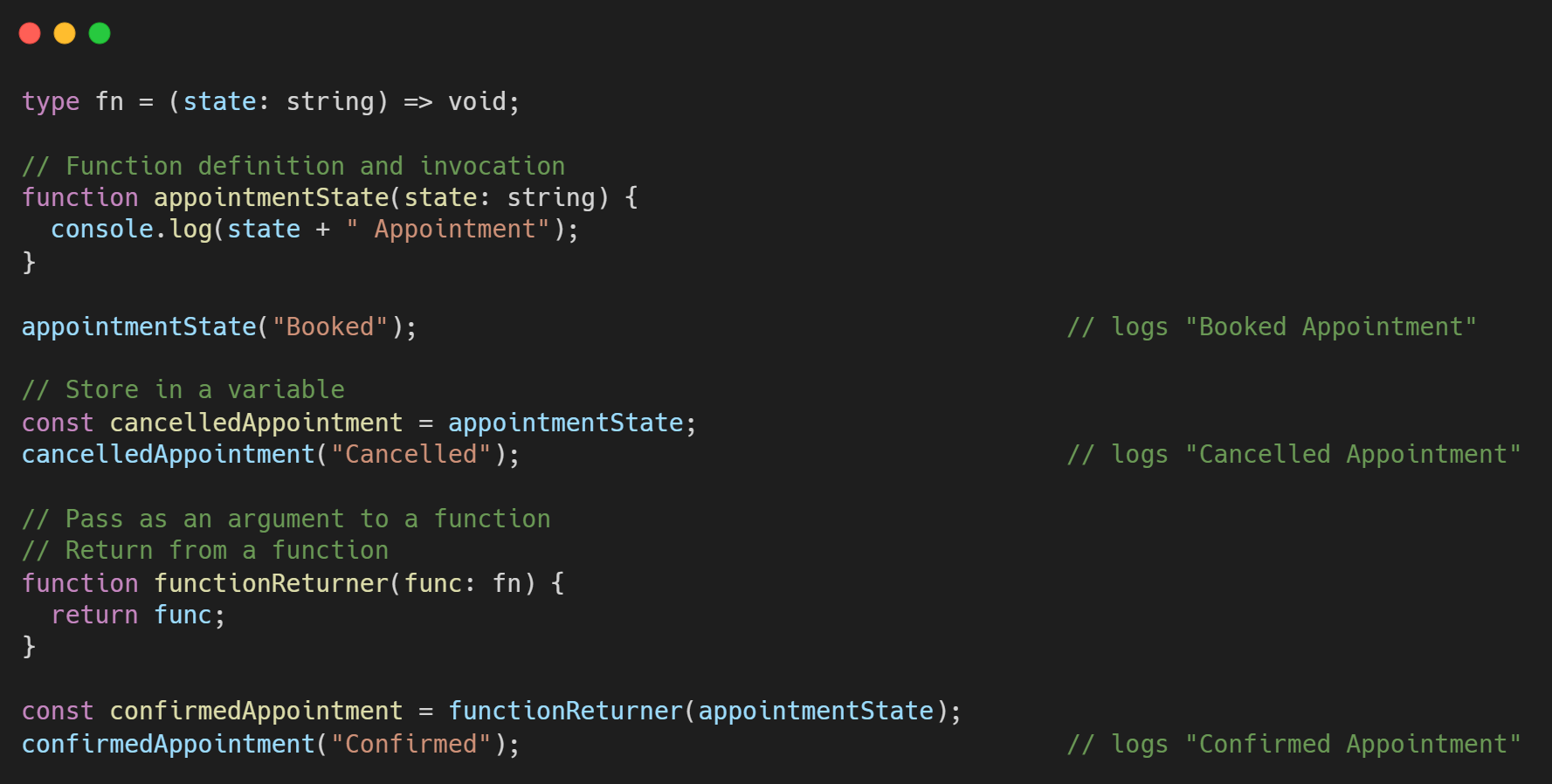

- Typescript function annotation how to#
- Typescript function annotation full#
- Typescript function annotation code#
The syntax for a different kind of functions is pretty much the same: (arg: Type): Type. It is not mandatory in TypeScript to use type annotations. That is why to trust inference for functions is not an ideal and very error-prone way.īy writing annotations for arguments and return values, we help TypeScript to prevent errors and notify us early if we try to use different types. Type annotations are used to enforce type checking. This enables developers to model APIs that have different types between their getters and setters, such as the style property in the DOM and CSSStyleRule API. Click the link below to open an exercise where we will explore type annotations.

The syntax for a type annotation is to put a colon followed by the type after the variable name before any assignment. Firstly, TypeScript cannot determine which types used for function arguments, so they are marked as any type, which we try to avoid:īut the function return statement was evaluated and data type assigned correctly:įurthermore, if you accidentally forgot a return statement, then will get a void type and no errors: TypeScript uses type annotations to explicitly specify types for identifiers such variables, functions, objects, etc. Another new feature is allowing completely unrelated types for get and set accessor properties that have explicit type annotations. TypeScript type annotations allow us to assign types to variables. I will not add annotations on purpose, see how the inference evaluates the functions.
Typescript function annotation full#
Take the following picture, for example, where a function receives two strings as arguments, first and second name, and returns a full name. In TypeScript, the type annotation on these parameters is implicitly any instead of any, and any type annotation given must be of the form Arraylog ( name ) Ĭoming back to the inference system, I want to show why we should not rely on it for functions. Type Annotations are used to specify the type of a variable, function parameter, or function return value explicitly.


Typescript function annotation how to#
Const myFunction = ( name : string ): void => console. Functions Function arguments In one end, out the other As a return type In Chapter 2, The Type System, you saw how to use type annotations. To define a function type in TypeScript, you use the arrow syntax, which looks like this: (parameter1: type1, parameter2: type2. For more information, read our affiliate disclosure.ĭefining Function Types In TypeScript Syntax Of Function Types In TypeScript If you click an affiliate link and subsequently make a purchase, we will earn a small commission at no additional cost to you (you pay nothing extra). Important disclosure: we're proud affiliates of some tools mentioned in this guide.
Typescript function annotation code#
They are useful for adding clarity to your code and. Limitations And Challenges Of Using TypeScript Function Types Type annotations are used to specify the type of a variable, function parameter, or function return type.The use of Type annotation is not mandatory in TypeScript. Common Use Cases For TypeScript Function Types Type Annotations are annotations which can be placed anywhere when we use a type.Advanced Topics In TypeScript Function Types.So why not dive in and explore the power of function types for yourself? In addition, function types can be used to create more expressive and flexible APIs, allowing other developers to understand and use your code more easily. This makes it easier to write complex applications with confidence and maintain them over time. One of the new features is allowing undefined -returning functions to have no return statement and inferring. With function types, you can specify the types of a function's input parameters and return value, which helps catch errors early and avoid unexpected runtime issues. Microsoft released TypeScript 5.1, introducing several new features and performance improvements that aim to enhance the developer experience and productivity of the programming language that adds types to JavaScript. Type annotations are optional in TypeScript. TypeScript function types provide a powerful way to define the shape of your functions and ensure that your code is type-safe. Type annotations are used to ensure that code is type-checked.


 0 kommentar(er)
0 kommentar(er)
